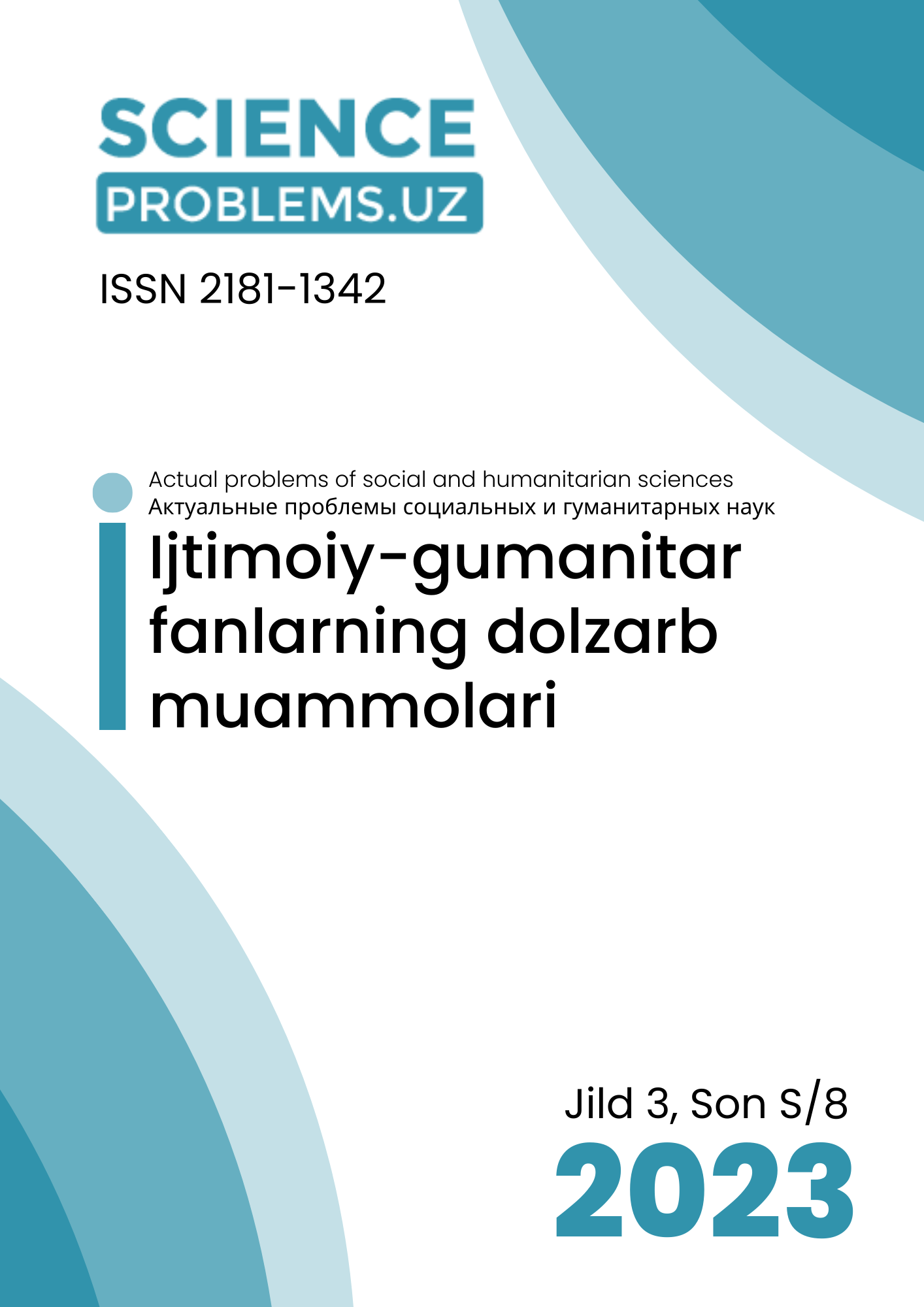DIFFERENT APPROACHES TO THE QUANTITATIVE-STATISTICAL CHARACTERISTICS OF PARTS OF SPEECH IN THE ENGLISH LANGUAGE
DOI:
https://doi.org/10.47390/SPR1342V3SI8Y2023N36Keywords:
quantitative-statistical analysis, parts of speech, collocations, phrases, syntactic constructions, frequency, distribution, collocational patterns, semantic associations, syntactic properties, lexical semantics, syntactic structures, discourse coherence, language variation, language change, natural language processing, information retrieval, sentiment analysis, named entity recognition, machine translation, English language.Abstract
This article explores different approaches to the quantitative-statistical characteristics of parts of speech in the English language. Parts of speech, including collocations, phrases, and syntactic constructions, play a fundamental role in language structure and usage. By employing quantitative-statistical analysis, researchers can investigate various aspects of parts of speech, such as frequency, distribution, collocational patterns, semantic associations, and syntactic properties. This analysis provides valuable insights into language phenomena, including lexical semantics, syntactic structures, discourse coherence, language variation, and language change. Furthermore, quantitative-statistical techniques contribute to natural language processing tasks, such as information retrieval, sentiment analysis, named entity recognition, and machine translation. The article discusses several applications and implications of quantitative-statistical analysis in the study of parts of speech, highlighting its importance in understanding and modeling the English language.
References
Firth, J. R. (1957). A synopsis of linguistic theory, 1930-1955. Studies in Linguistic Analysis, 1-32.
Kilgarriff, A. (2005). Language is never, ever, ever, random. Corpus Linguistics and Linguistic Theory, 1(2), 263-276.
Church, K. W., & Hanks, P. (1990). Word association norms, mutual information, and lexicography. Computational Linguistics, 16(1), 22-29.
Michel, J. B., Shen, Y. K., Aiden, A. P., Veres, A., Gray, M. K., Pickett, J. P., ... & Aiden, E. L. (2011). Quantitative analysis of culture using millions of digitized books. science, 331(6014), 176-182.
Petersen, A. M., Tenenbaum, J., Havlin, S., & Stanley, H. E. (2012). Statistical laws governing fluctuations in word use from word birth to word death. Scientific reports, 2(1), 1-5.
Piantadosi, S. T. (2014). Zipf’s word frequency law in natural language: A critical review and future directions. Psychonomic bulletin & review, 21(5), 1112-1130.
Sigurd, B., Eeg-Olofsson, M., & Van de Weijer, J. (2004). Word length, sentence length and frequency–Zipf revisited. Studia Linguistica, 58(1), 37-52.
Tamine, L. (2017). Statistical properties of English words. Lexical Analysis, 28-52.








